Year 9 Solving Equations Worksheets
Algebraic Angles in Parallel Lines

Find the Values
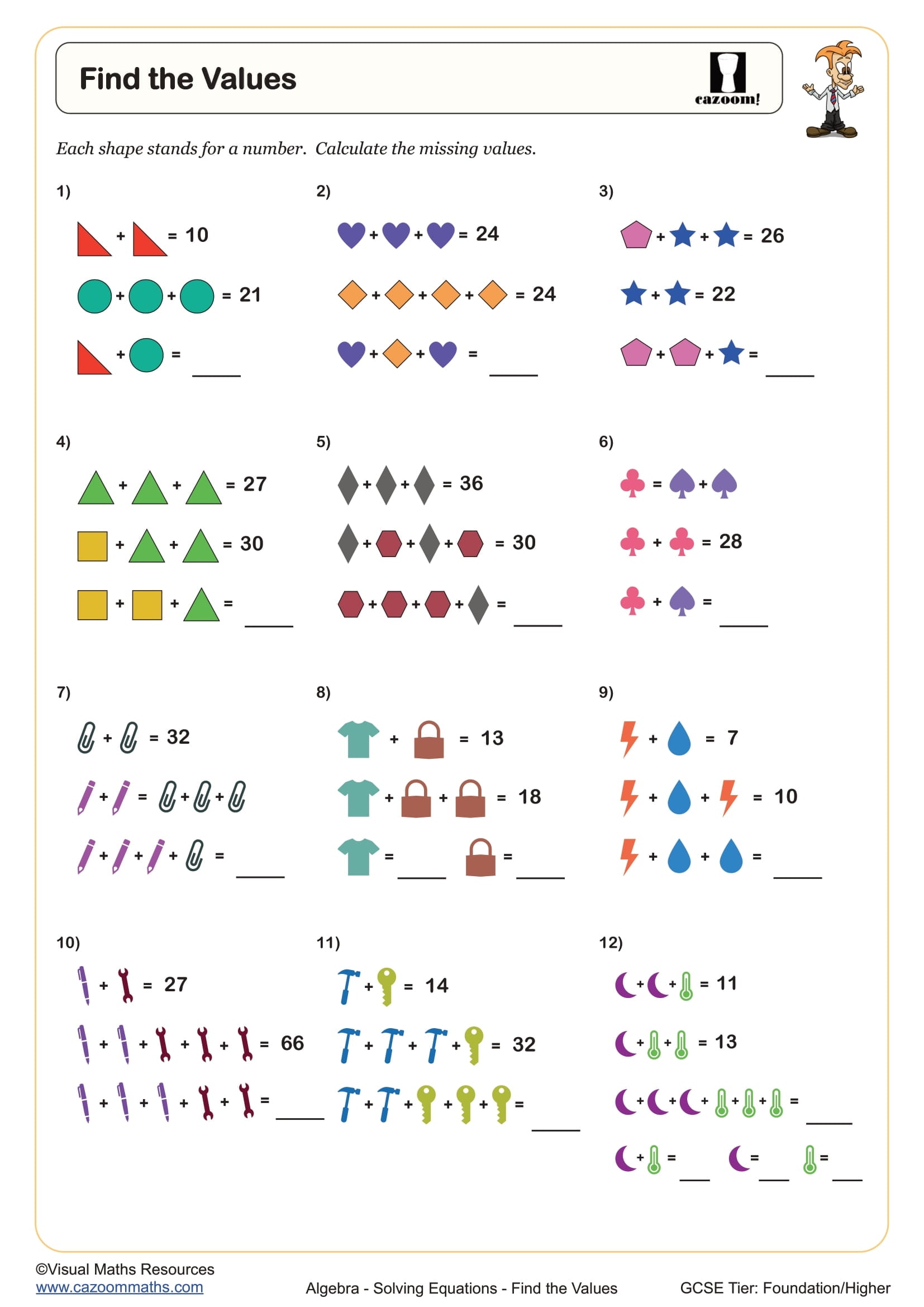
Forming and Solving Equations
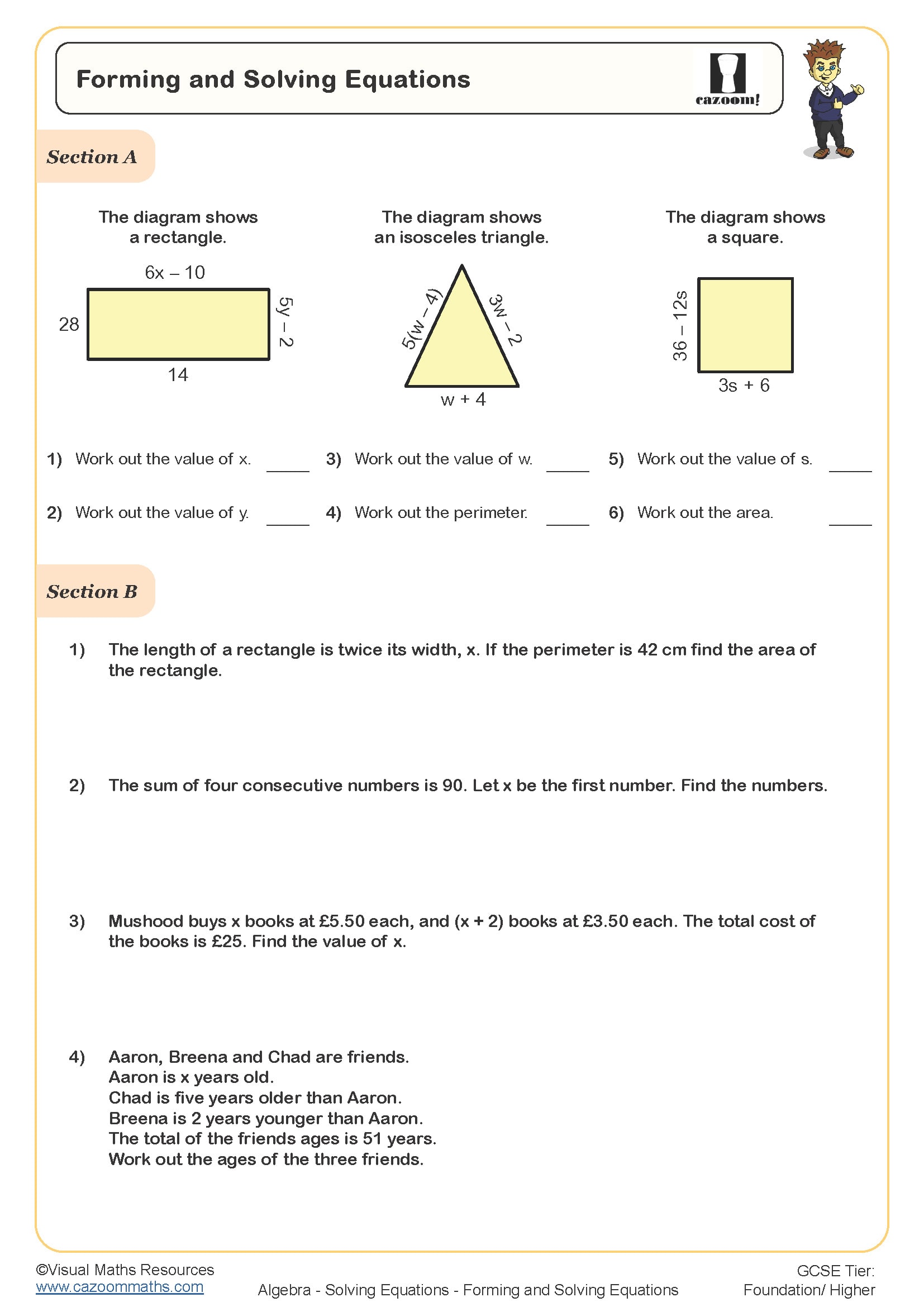
Forming and Solving Equations Involving Angles (A)
-Worksheet.jpg)
Forming and Solving Equations Involving Angles (B)
-Worksheet.jpg?w=3840)
I Think of A Number Problems
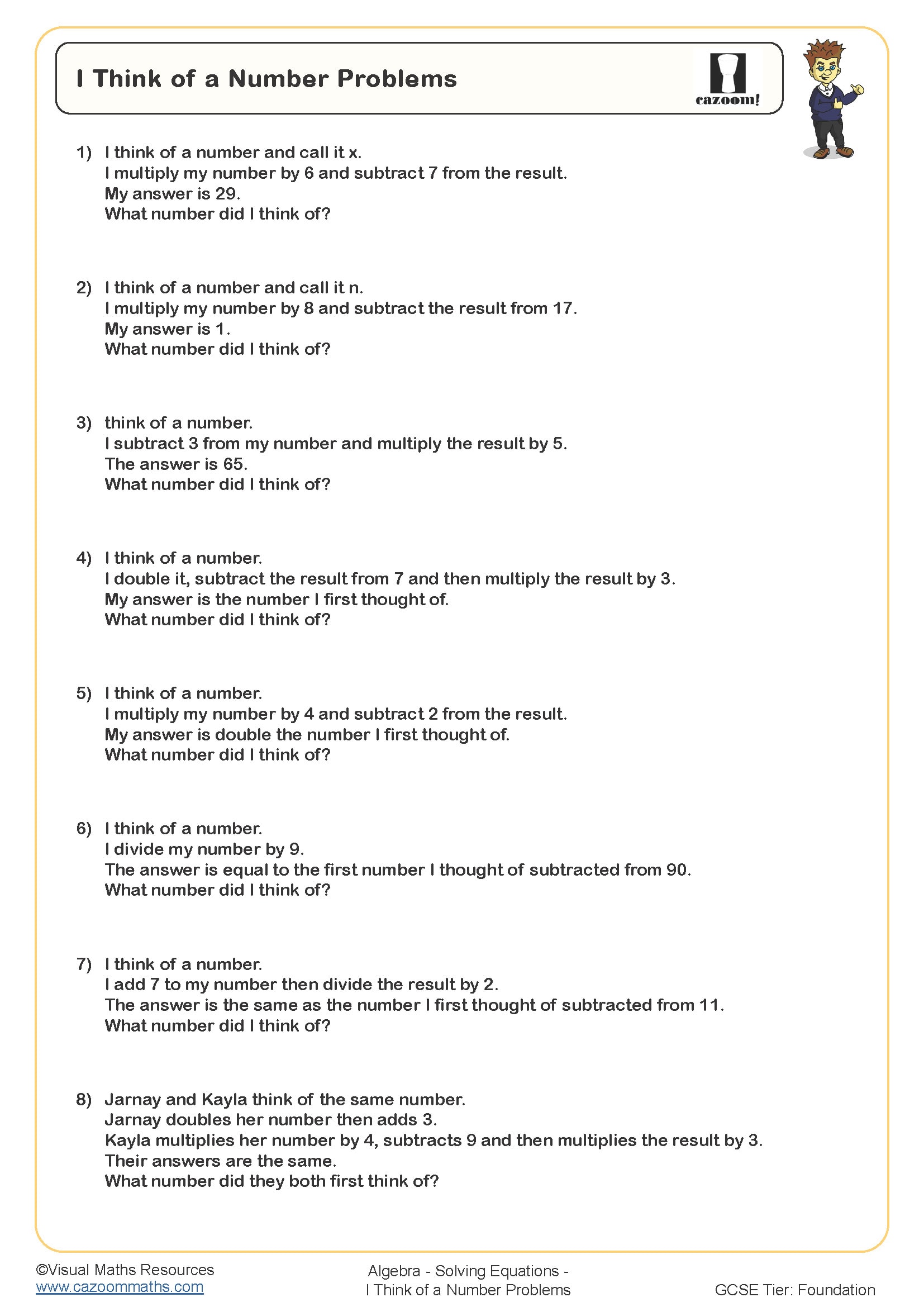
Solving Equations - Unknowns on Both Sides

Solving Equations 15 Minute Challenge (A)

Solving Equations 15 Minute Challenge (B)
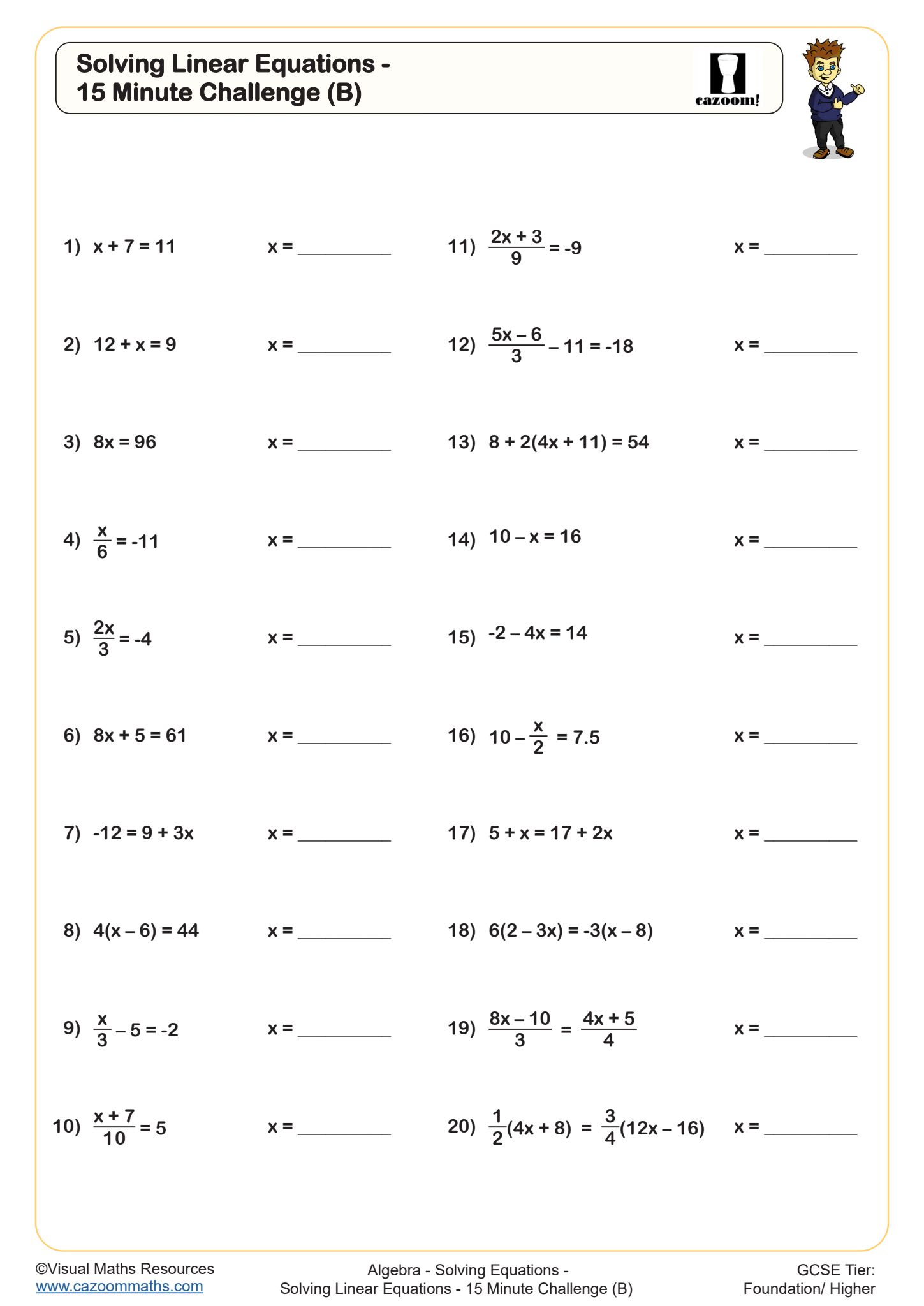
Solving Equations Involving Area of Rectangles
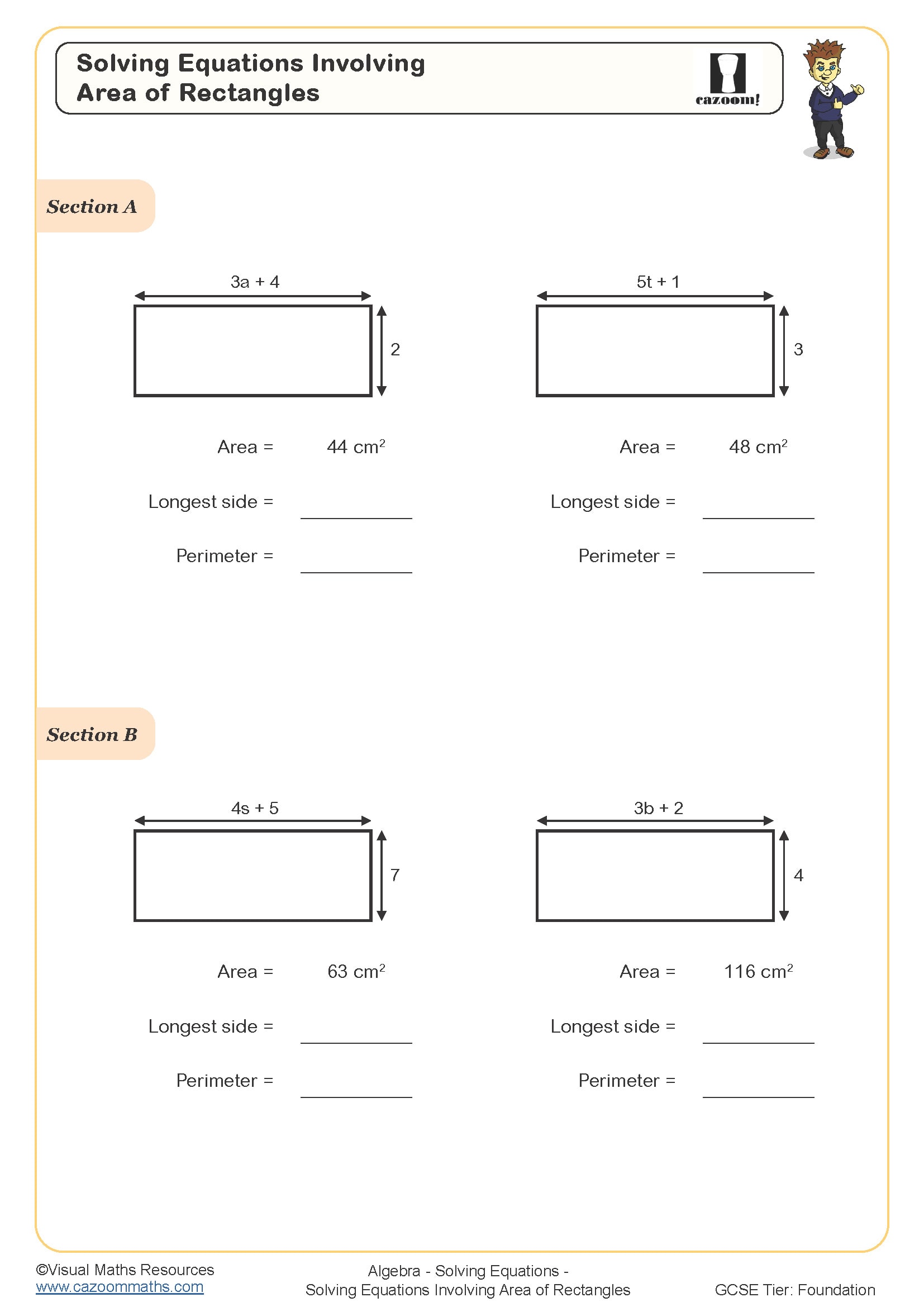
Solving Equations Involving Brackets

Solving Equations Involving Fractions

Solving Equations with Unknowns on Both Sides - Using Algebra Tiles
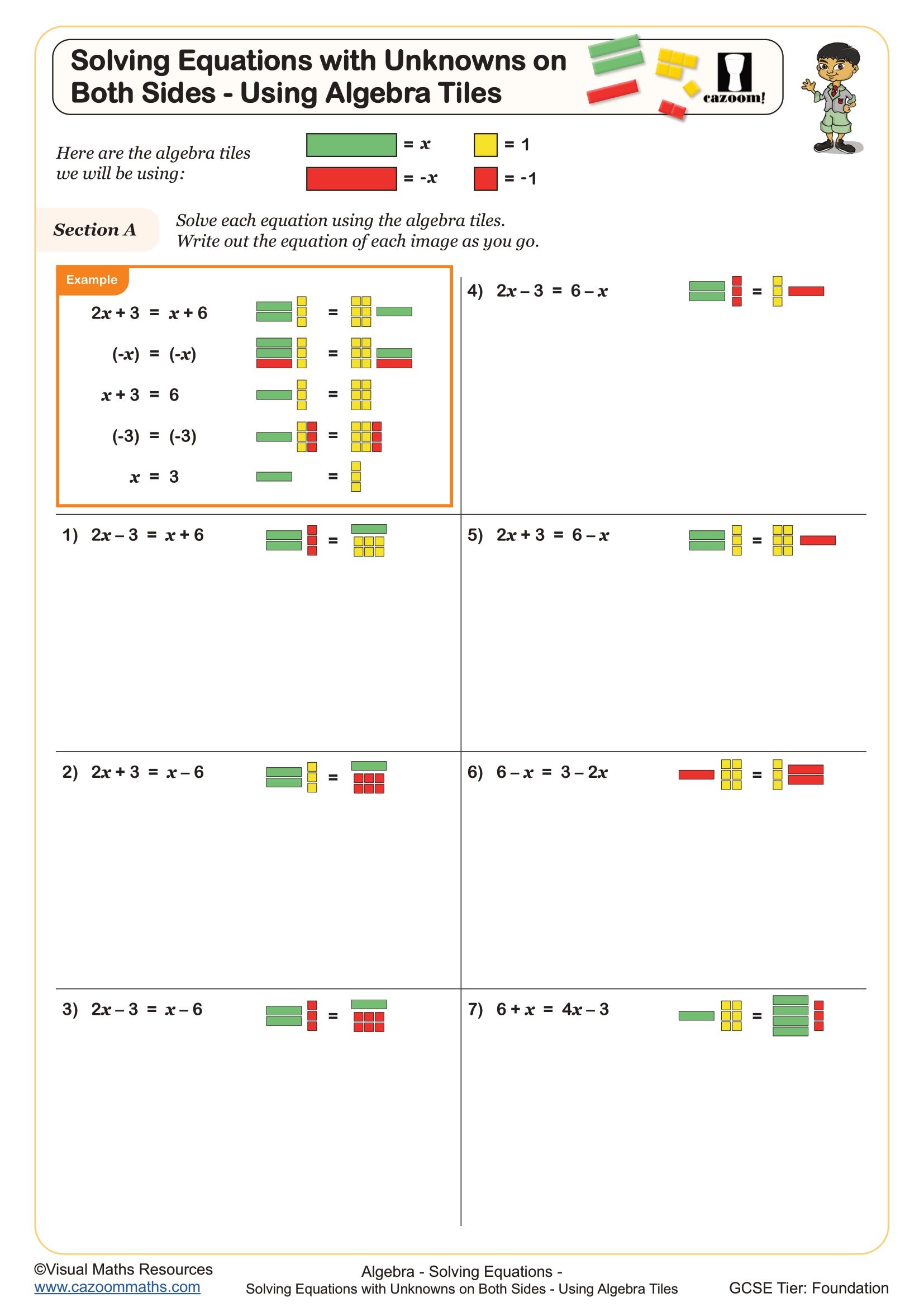
Solving Linear Equations (C)
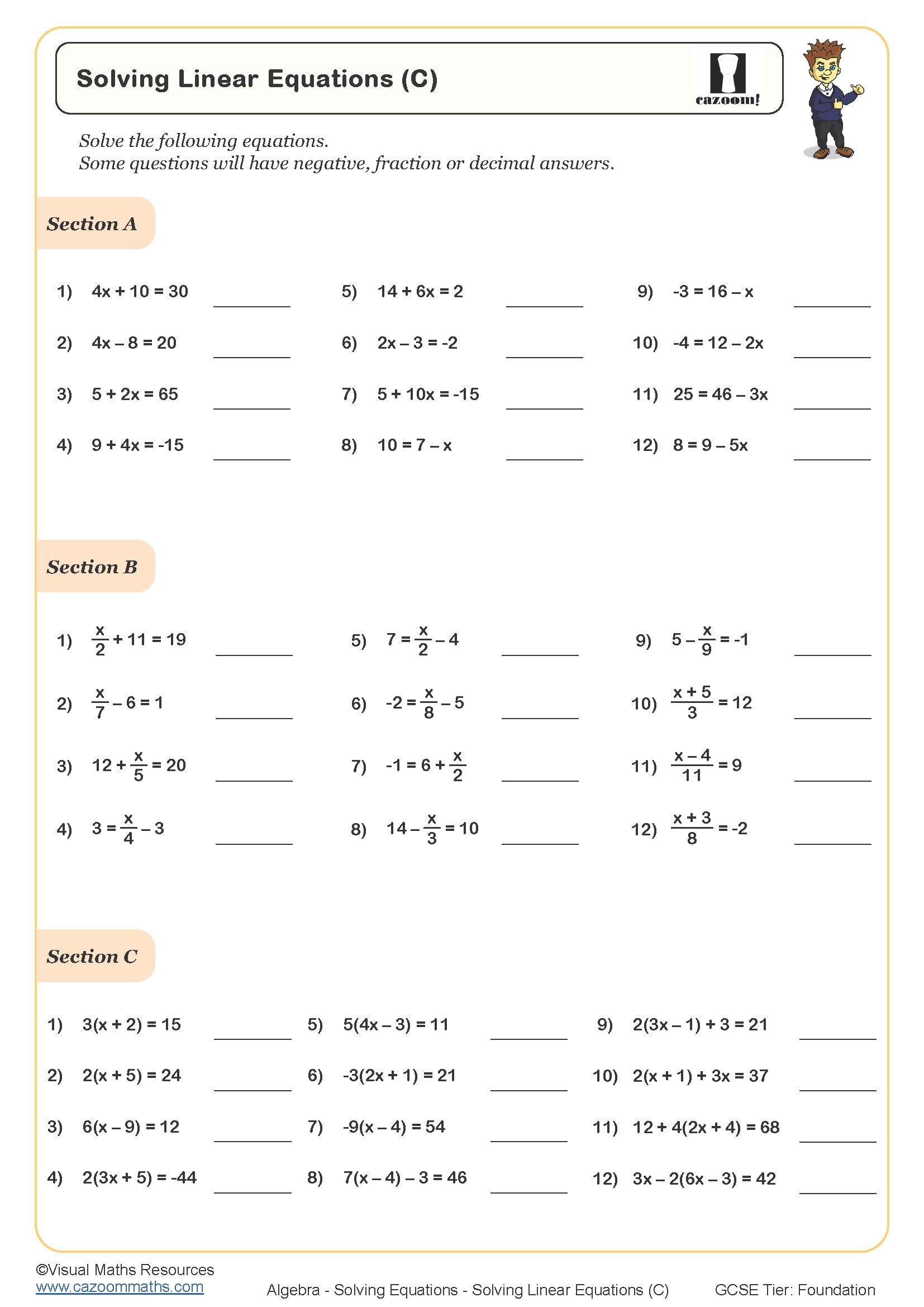
Solving Linear Equations (D)

Solving Simultaneous Equations Graphically (A)
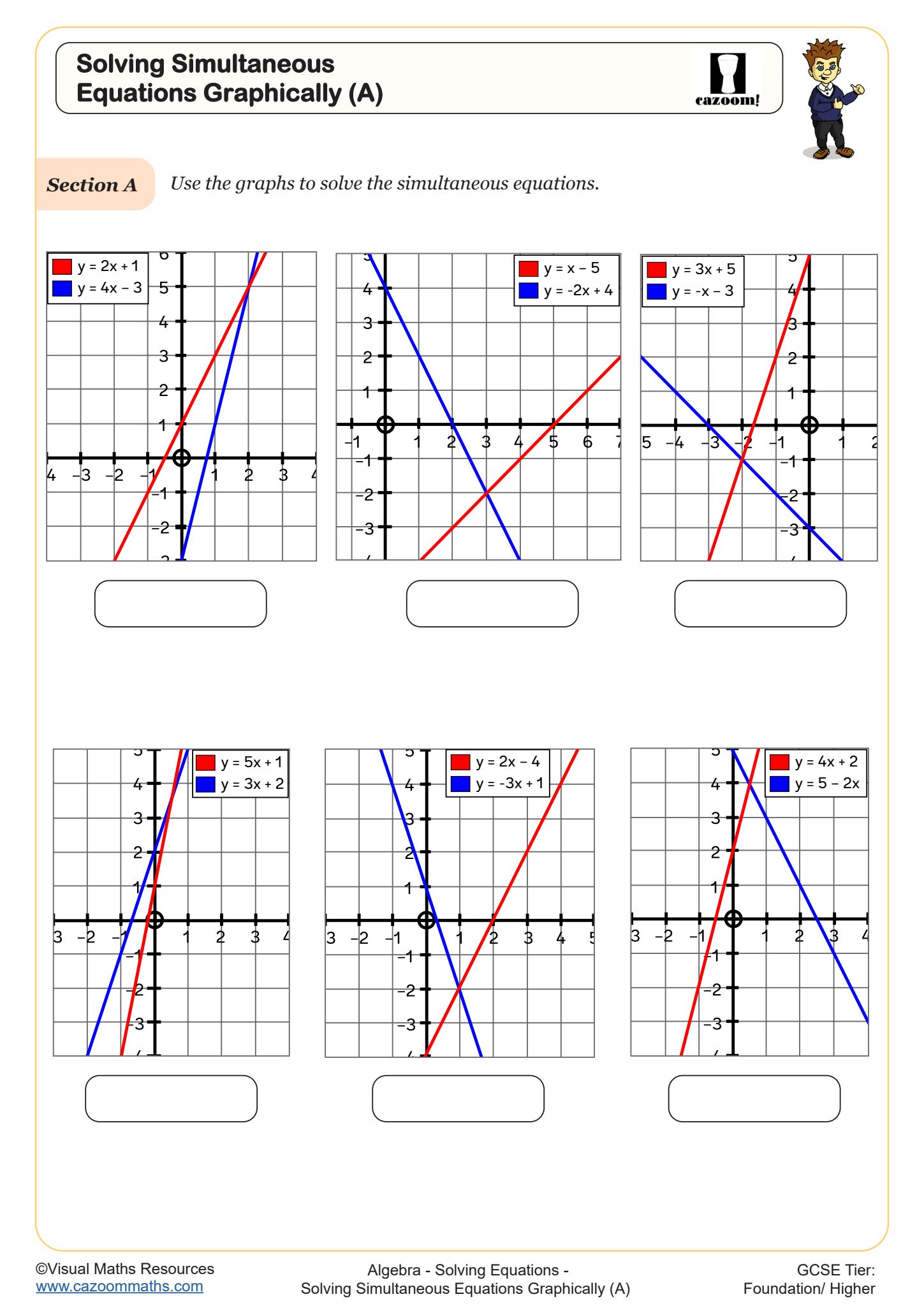
Trial and Improvement (A)
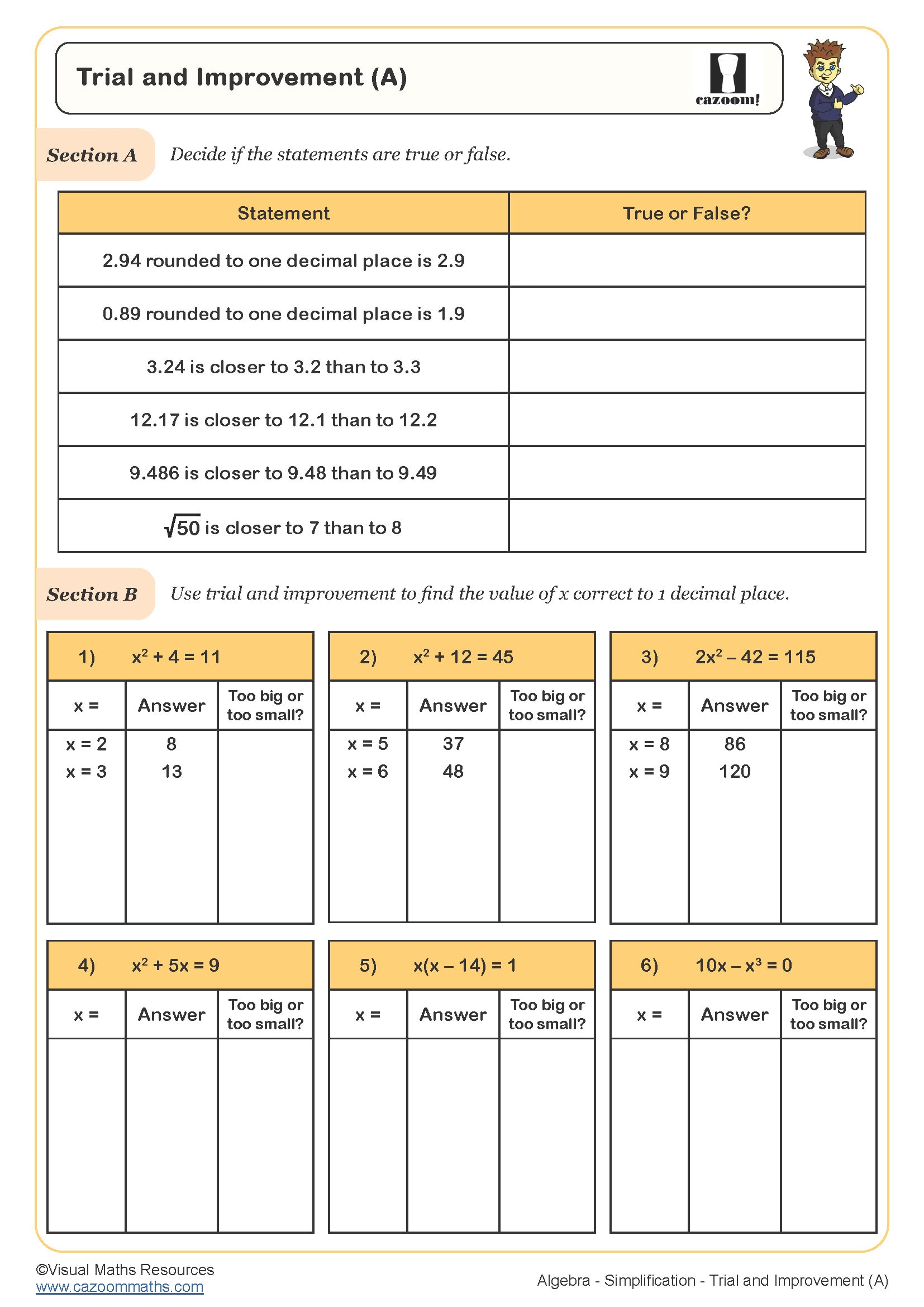
Trial and Improvement (B)
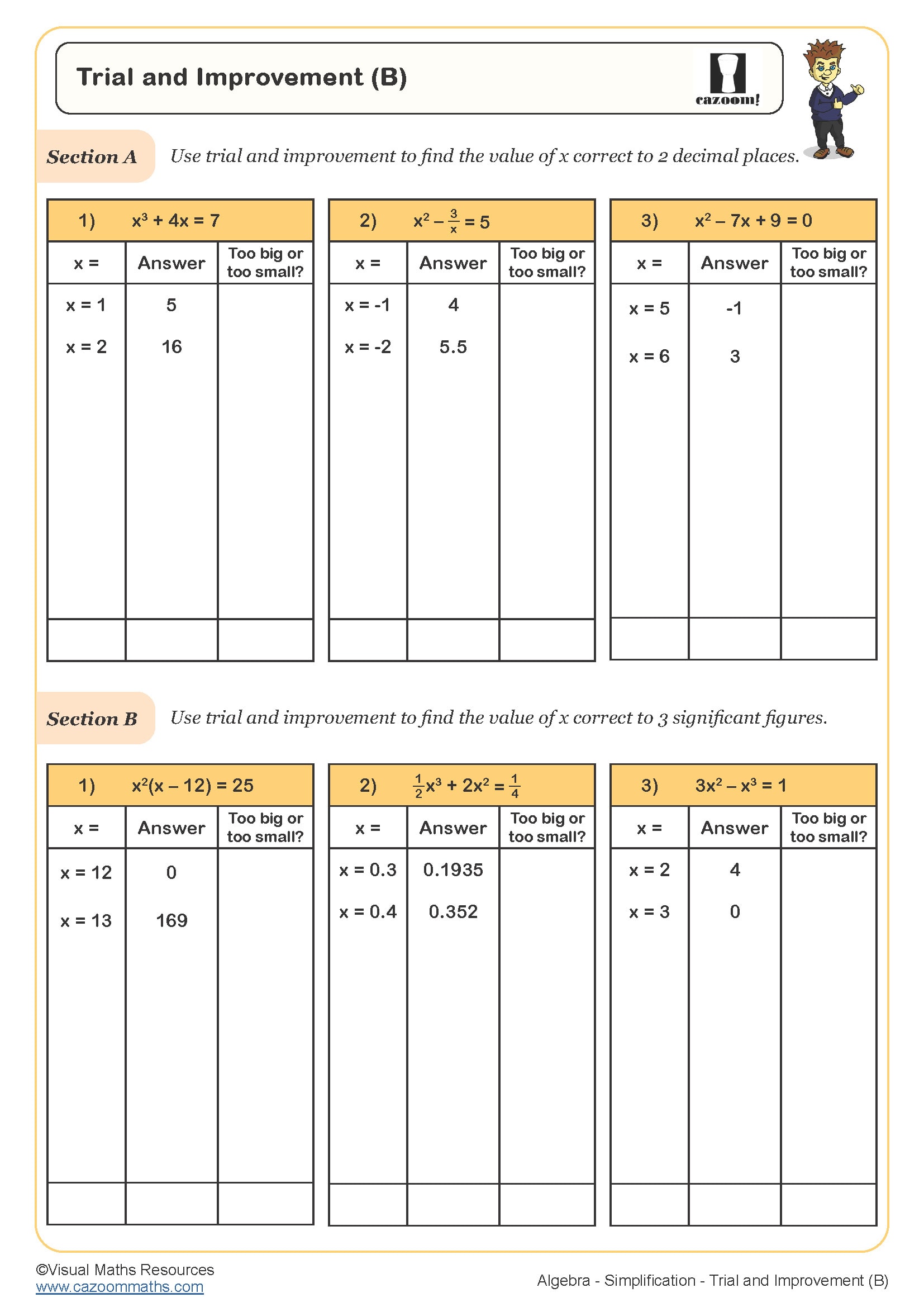
7 Benefits of Adding Our Year 9 Solving Equations Worksheets PDFs to Your Revision Plan
Students need to develop specific skills when they transition from basic algebra in Year 8 to advanced techniques in Year 9. Students who solve equations at this level show better logical thinking in all math subjects, including geometry and statistics. Students need to solve multi-step problems while handling variables that appear on both sides of the equation and master advanced inverse operation concepts. Students develop lasting mathematical skills through structured worksheet practice because they learn methods instead of memorising steps. The systematic approach to algebra prevents students from developing knowledge gaps, which would occur before starting GCSE study when algebraic manipulation becomes necessary for accessing advanced content.
Specific learning benefits include:
• Mastery of balance method principles
• Enhanced algebraic manipulation techniques
• Proficiency with multi-step problems
• Preparation for GCSE algebra topics
• Improved mathematical reasoning skills
• Development of systematic working methods
• Strengthened problem-solving resilience
Worksheet Topics at a Glance: Raise Maths Scores With Important KS3 Algebra Knowledge
The worksheets begin with simple numerical problems, followed by algebra tile pictures and conclude with symbolic expressions. The methodically designed approach teaches students basic concepts which they need to understand before they can progress to more complex procedures. The worksheets contain step-by-step solutions that explain algebraic reasoning to students while presenting both answers and complete solution methods.
The worksheets in this collection include:
• Foundation Skills
• Contextual Applications
• Advanced Techniques
• Simultaneous Equations
• Quadratic Equations
• Graphical Methods
• Practice & Fluency
Struggling With Solving Equations? Cazoom Maths Year 9 Algebra Activities Make It Simple
Teachers can easily implement classroom activities through established differentiation plans and answer keys that they have already created. The Cazoom Maths worksheets provide teachers with a tool to deliver mixed-ability lessons through extension activities for advanced students and additional support for students who require help. The assessment tool contains different question types that span from simple single-step problems to intricate multi-variable questions to detect student understanding deficits precisely. Teachers can reduce their preparation time and workload by combining pre-formatted questions with detailed mark schemes. The availability of high-quality resources at all times enables teachers to concentrate on teaching methods instead of developing educational materials, while diverse learning environments maintain student interest from start to finish of the academic period.
Every Student’s First Step to Practical Maths: Year 9 Solving Equations Worksheets
People who can solve equations can handle various real-world problems which appear in their daily activities. Students learn how algebraic thinking enables them to solve problems in technology and science as well as make everyday decisions. For example-
• Budget planning and financial calculations
• Engineering design and construction measurements
• Sports statistics and performance analysis
• Recipe scaling and nutritional calculations
• Computer programming logic structures
• Scientific formula manipulation
Business profit and loss modelling
• Journey planning with multiple variables